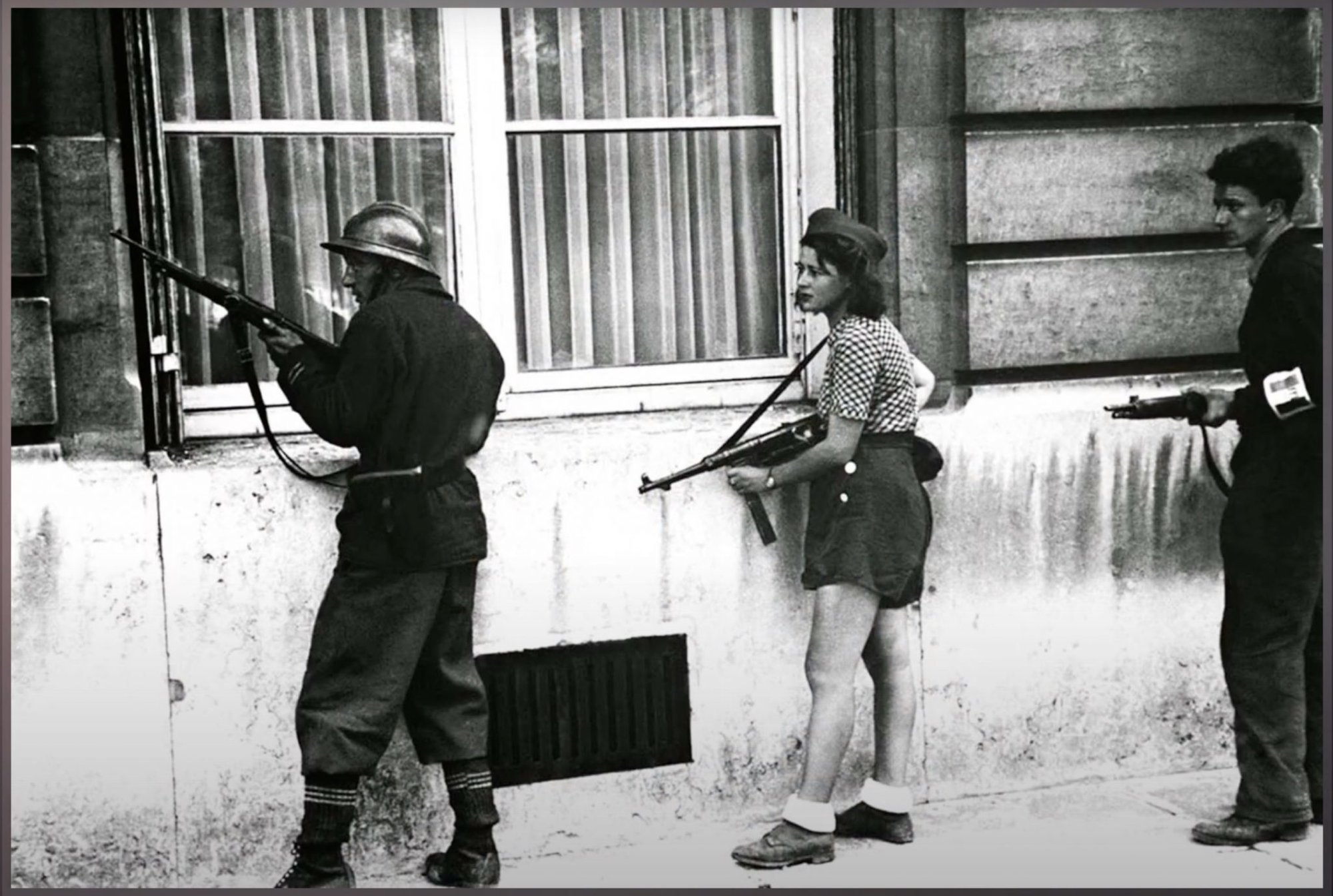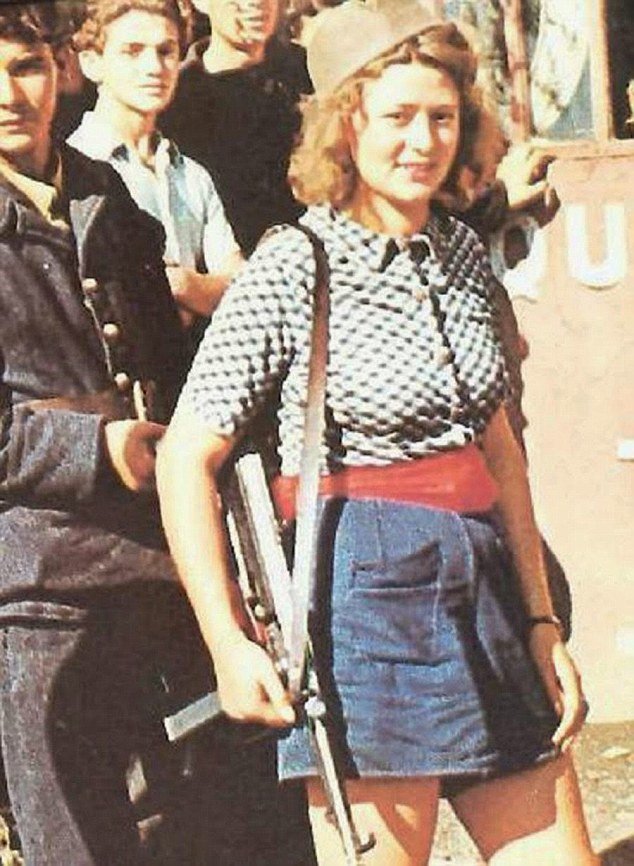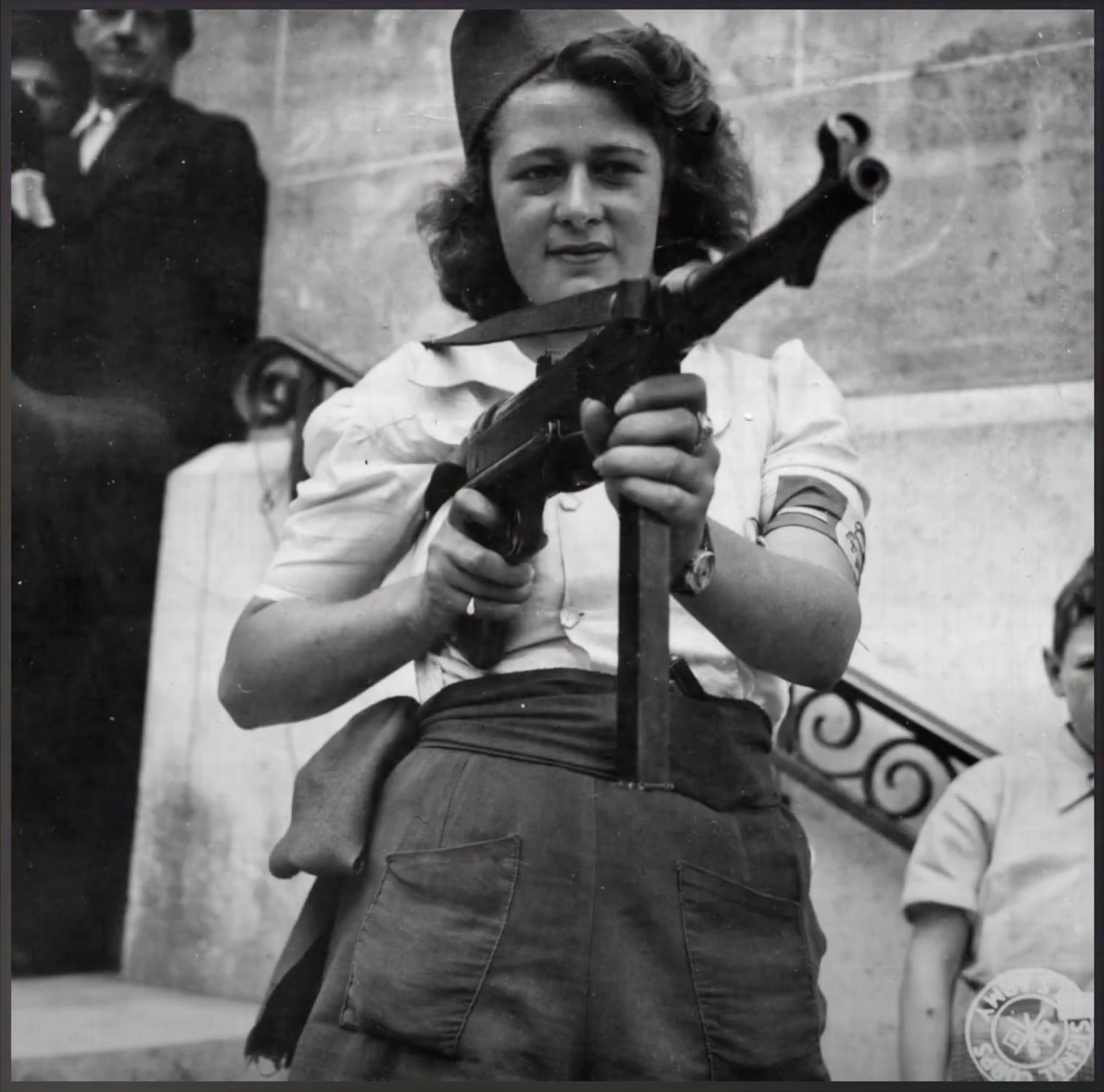The Woman Behind This Iconic Photograph Was a Symbol of the French Resistance

A girl of the resistance movement is a member of a patrol to rout out the Germans snipers still left in areas in Paris, France, on August 29, 1944. The girl had killed two Germans in the Paris Fighting two days previously. Screenshot courtesy of YouTube.
We’ve all seen the iconic photograph: the young woman wearing shorts, a checkered shirt, and a French beret and holding an MP-40 submachine gun, looking down the side of a building, while two French Resistance fighters flank her.
The look of concern on her face is indicative of the threat of German snipers lingering in the buildings just beyond the camera lens. Unbeknownst to the photographer and to the readers of Life magazine who were viewing the photograph for the very first time a month after the liberation of France, there was no sign of the importance of the young woman that we’d later learn had become a symbol of the French Resistance. At least that was the case until journalist Jack Belden brought her story to print.

“First were those wretches dragged in by the crowd to have their heads shorn because they had consorted with the Germans,” Belden wrote in “The Girl Partisan of Chartres” in the Sept. 4, 1944, issue of Life. “Next were those respectable women who, no doubt, had never slept with a German, who applauded the hair-shearing with just the right measure of gaiety and satisfied indignation. Thirdly, there was that large group of women who employed a radiant roll of the eyes and a liquid curve of the lips to flirt patriotically with the Americans. There was one woman, however, who seemed to belong to none of these classifications.”
In a courtyard, standing still and holding two hunks of bread coated with thick and unsavory jam, was Nicole Minet. It was the name she told Belden and the name she was referred to by the Francs-Tireurs et Partisans Français, the local partisan force for which its members wore FTPF armbands to mark their allegiance.
Her real name, in fact, was Simone Segouin. The 18-year-old with blonde hair was a typical French teenager who attended school until she was 14 and worked on her family’s farm prior to the war. When she joined the French Resistance, she did so because of a man, a lieutenant named Roland Boursier. Her initial task was to steal a German bicycle and repaint it to use as her “reconnaissance vehicle.” At first, she carried messages as a courier to other members of the group. Then, Boursier taught her how to handle a weapon, and she served as a liaison between four groups under Boursier’s command, often using her bicycle to travel the countryside.

Boursier even brought her along to act as a lookout while other members of their group sabotaged one of the main railroads in Paris. Although she didn’t fire a shot, the group successfully completed their sabotage mission, and she ultimately earned their trust. That trust culminated on the night of July 14, 1944, when she joined two other partisans in a ditch along a road frequented by the Germans, or “Boche” as the French called them. As two Boche rode by their position at 5 a.m. on their bicycles, the ambush was sprung and the partisans fired their weapons.
“Nothing pleased Nicole so much as the killing of the Germans,” Belden wrote. “I could find no traces of what is conventionally called toughness in Nicole. After routine farm life, she finds her present job thrilling and exhilarating. Now that the war is passing beyond her own home district she does not think of going back to the farm. She wants to go with the Partisans and help free the rest of France.”
In that famous photograph of the French Resistance, that is exactly what she was doing.
Read Next:

Matt Fratus is a history staff writer for Coffee or Die. He prides himself on uncovering the most fascinating tales of history by sharing them through any means of engaging storytelling. He writes for his micro-blog @LateNightHistory on Instagram, where he shares the story behind the image. He is also the host of the Late Night History podcast. When not writing about history, Matt enjoys volunteering for One More Wave and rooting for Boston sports teams.
BRCC and Bad Moon Print Press team up for an exclusive, limited-edition T-shirt design!
BRCC partners with Team Room Design for an exclusive T-shirt release!
Thirty Seconds Out has partnered with BRCC for an exclusive shirt design invoking the God of Winter.
Lucas O'Hara of Grizzly Forge has teamed up with BRCC for a badass, exclusive Shirt Club T-shirt design featuring his most popular knife and tiomahawk.
Coffee or Die sits down with one of the graphic designers behind Black Rifle Coffee's signature look and vibe.
Biden will award the Medal of Honor to a Vietnam War Army helicopter pilot who risked his life to save a reconnaissance team from almost certain death.
Ever wonder how much Jack Mandaville would f*ck sh*t up if he went back in time? The American Revolution didn't even see him coming.
A nearly 200-year-old West Point time capsule that at first appeared to yield little more than dust contains hidden treasure, the US Military Academy said.












